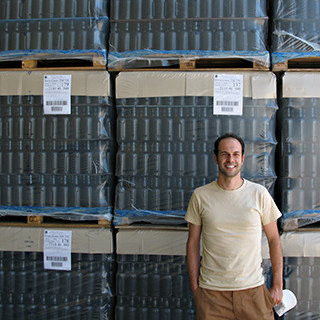
Podcast: Play in new window | Download (Duration: 16:30 — 15.5MB)
Subscribe: Google Podcasts | Spotify | Android | RSS | More
 Carol Deppe was a guest here a few months ago, talking about how most people misunderstand the potato, which is about as nutritious a vegetable as you could hope for. I found out about that because I was checking out her new book, The Resilient Gardener, which offers all kinds of advice for making the most of home-grown food. In that, Carol talks about having bred a delicata squash with a taste like a medjool date. That sounded intriguing, but in a way not all that surprising. If anyone could breed a squash – or pumpkin – that tasted like a date, it would be Carol Deppe. Her earlier book, Breed Your Own Vegetable Varieties, is a wonderful, informative and accessible book about the science of plant genetics. It is, in fact, better than all the text books I’ve ever read on the subject. Which is not surprising, as that’s what Deppe set out to write.
Carol Deppe was a guest here a few months ago, talking about how most people misunderstand the potato, which is about as nutritious a vegetable as you could hope for. I found out about that because I was checking out her new book, The Resilient Gardener, which offers all kinds of advice for making the most of home-grown food. In that, Carol talks about having bred a delicata squash with a taste like a medjool date. That sounded intriguing, but in a way not all that surprising. If anyone could breed a squash – or pumpkin – that tasted like a date, it would be Carol Deppe. Her earlier book, Breed Your Own Vegetable Varieties, is a wonderful, informative and accessible book about the science of plant genetics. It is, in fact, better than all the text books I’ve ever read on the subject. Which is not surprising, as that’s what Deppe set out to write.
The whole business of squashes seems fraught with difficulty. First off, what do you call them: zucchini, pumpkins, courgettes, summer squash, winter squash? Is there any difference (in England) between a baby marrow and a courgette, or between an overgrown zucchini and a marrow? ((Questions to which I returned in 2016: When is a zucchini not a zucchini?)) And calling them by their Latin names doesn’t really help, because the same species can be used in different ways, and it is the usage that tends to determine what they’re called.
The idea of drying a summer squash for use through the winter is very appealing, and Carol says that costata romanesco, and old Italian heritage variety, is one of the few varieties suitable for treating in this way. Looking at pictures, it does seem to be very similar to the variety I see on the market here, so I’m determined now to see whether I can persuade my local vegetable seller to bring me an overgrown zucchini – a zuchone, or just a zucca? He’ll probably think I’m mad, when everybody else wants them as tiny as possible.
Notes
- The Resilient Gardener is published by Chelsea Green Publishing.
- A keen amateur breeder called Rebsie Fairholm was doing wonderful things breeding a purple-podded mange-tout pea, inspired and informed by Carol Deppe’s work. Alas, she seems to have stopped for now, although you can still read about her efforts on her website.
- Banner photo by McBeth.
- Intro music by Dan-O at DanoSongs.com.
- Outro music, you shouldn’t be surprised to learn, is Tonight, tonight by the Smashing Pumpkins. Sometimes obvious is good.
 Italy, land of fabled wines, has seen an astonishing craft beer renaissance. Or perhaps naissance would be more accurate, as Italy has never had that great a reputation for beers. Starting in the early 1990s, with Teo Musso at Le Baladin, there are now more than 500 craft breweries in operation up and down the peninsula. Specialist beer shops are popping up like mushrooms all over Rome, and probably elsewhere, and even our local supermarket carries quite a range of unusual beers. Among them four absolutely scrummy offerings from Mastri Birai Umbri – Master Brewers of Umbria. And then it turns out that my friend Dan Etherington, who blogs (mostly) at
Italy, land of fabled wines, has seen an astonishing craft beer renaissance. Or perhaps naissance would be more accurate, as Italy has never had that great a reputation for beers. Starting in the early 1990s, with Teo Musso at Le Baladin, there are now more than 500 craft breweries in operation up and down the peninsula. Specialist beer shops are popping up like mushrooms all over Rome, and probably elsewhere, and even our local supermarket carries quite a range of unusual beers. Among them four absolutely scrummy offerings from Mastri Birai Umbri – Master Brewers of Umbria. And then it turns out that my friend Dan Etherington, who blogs (mostly) at